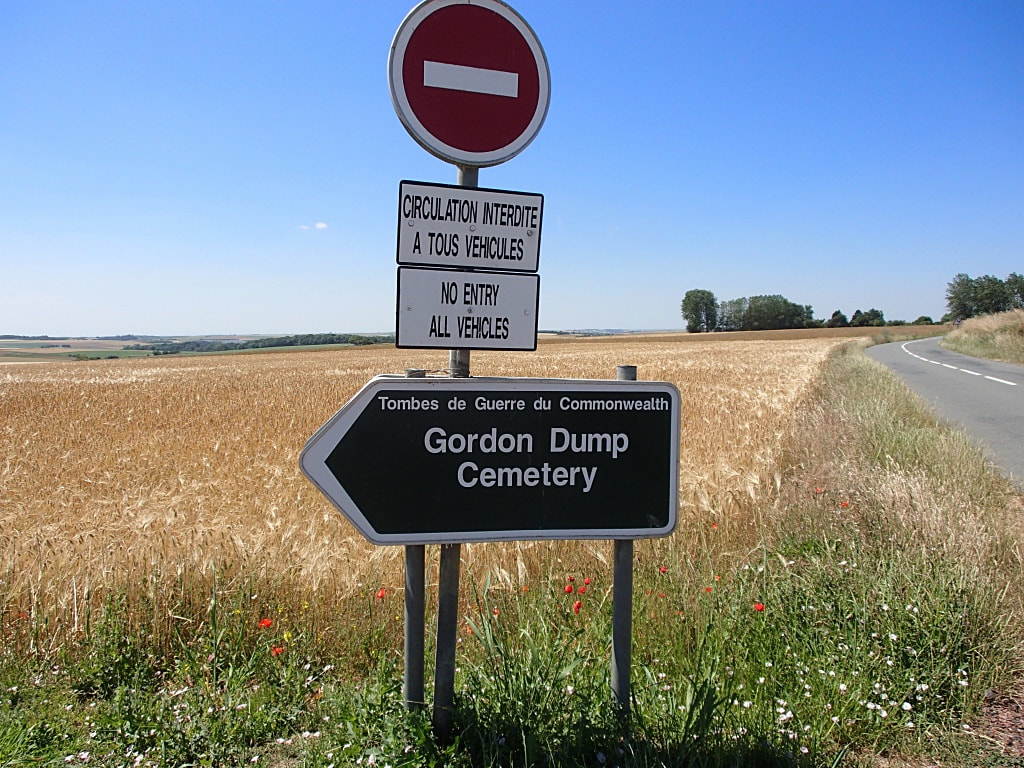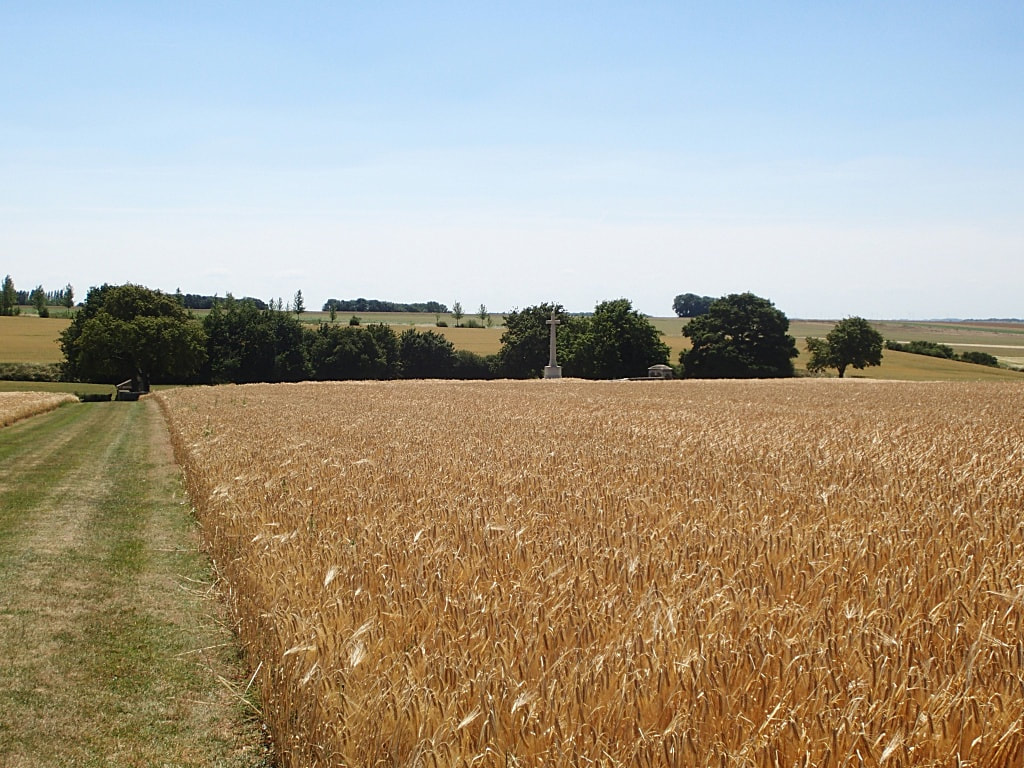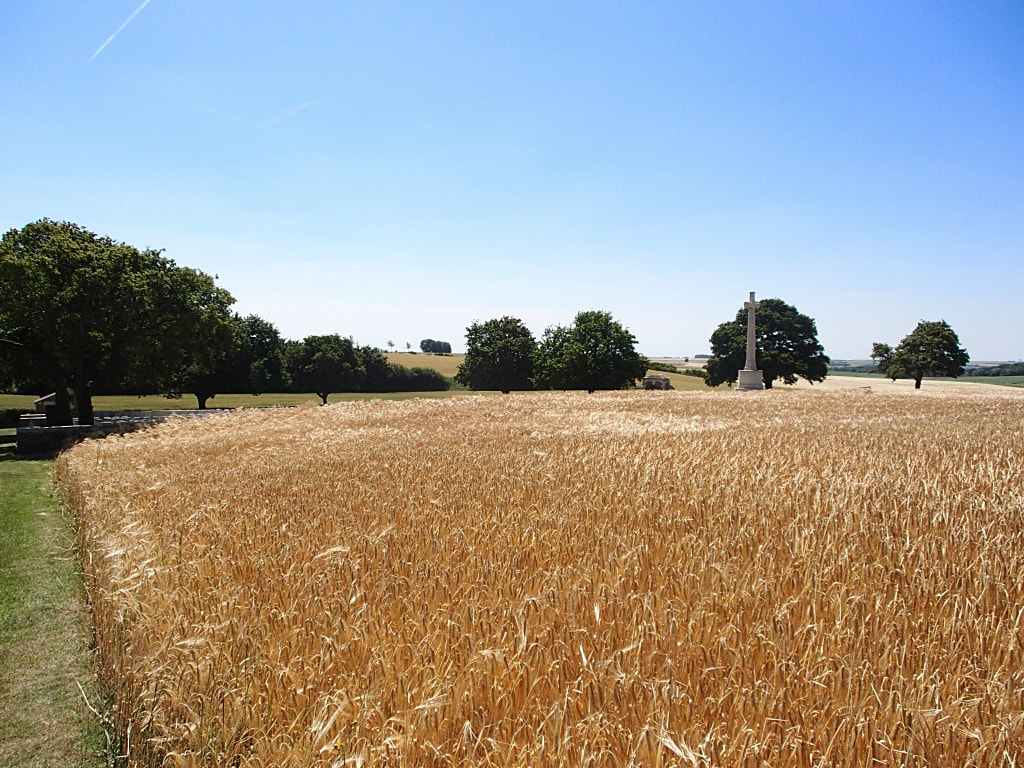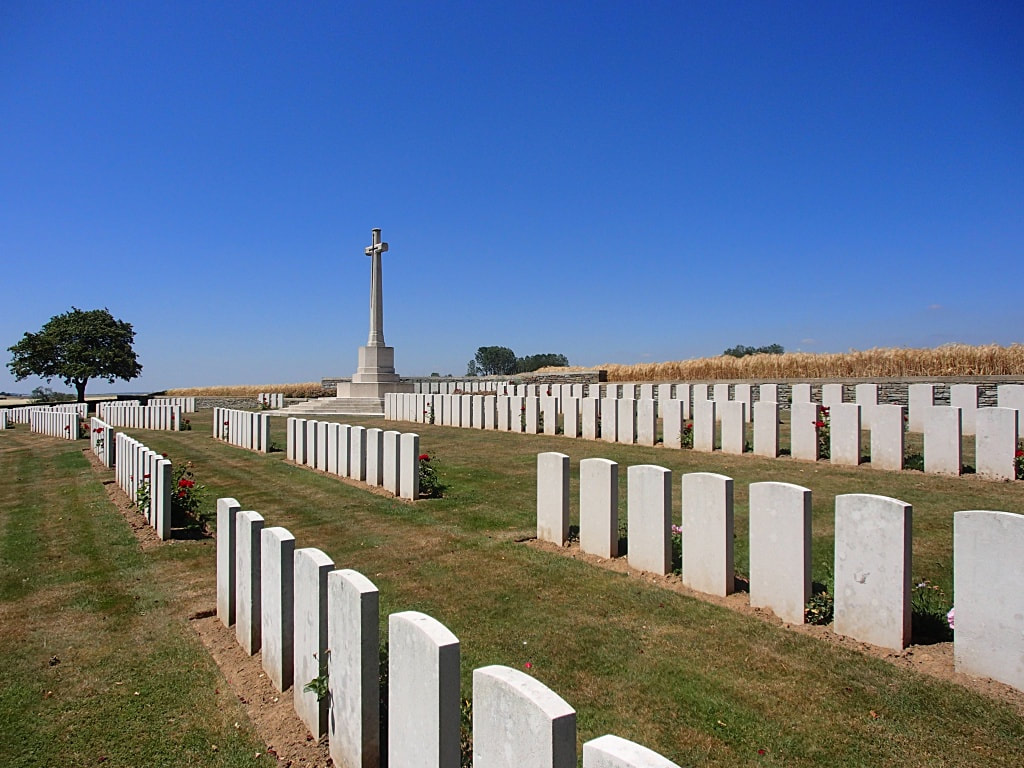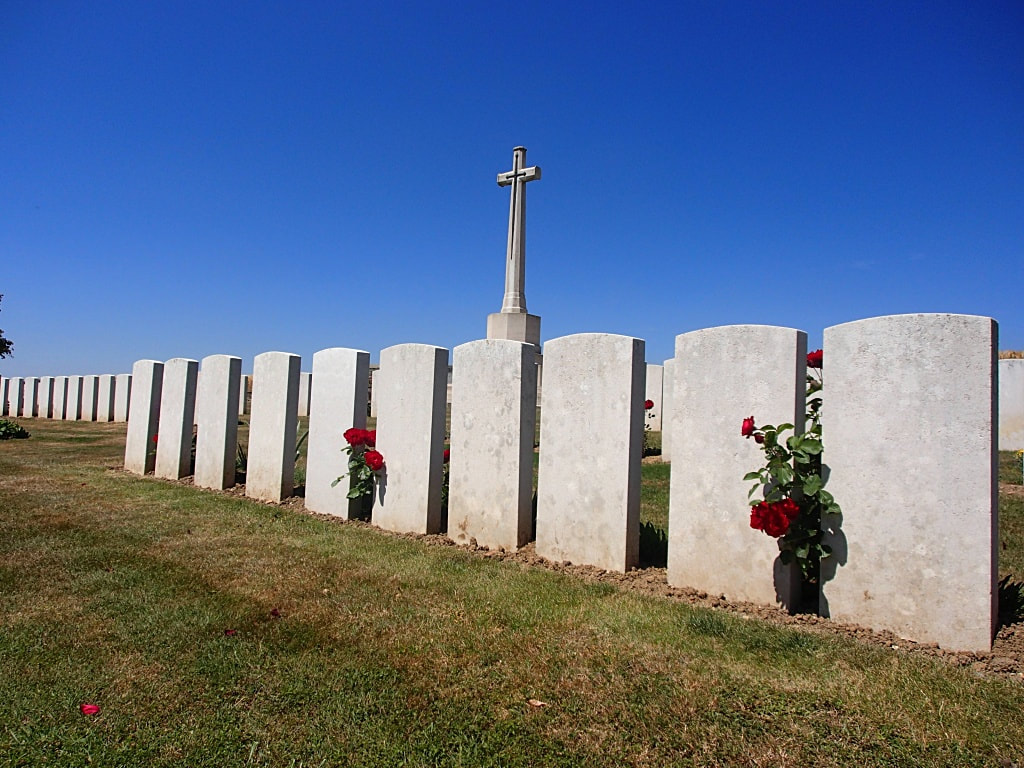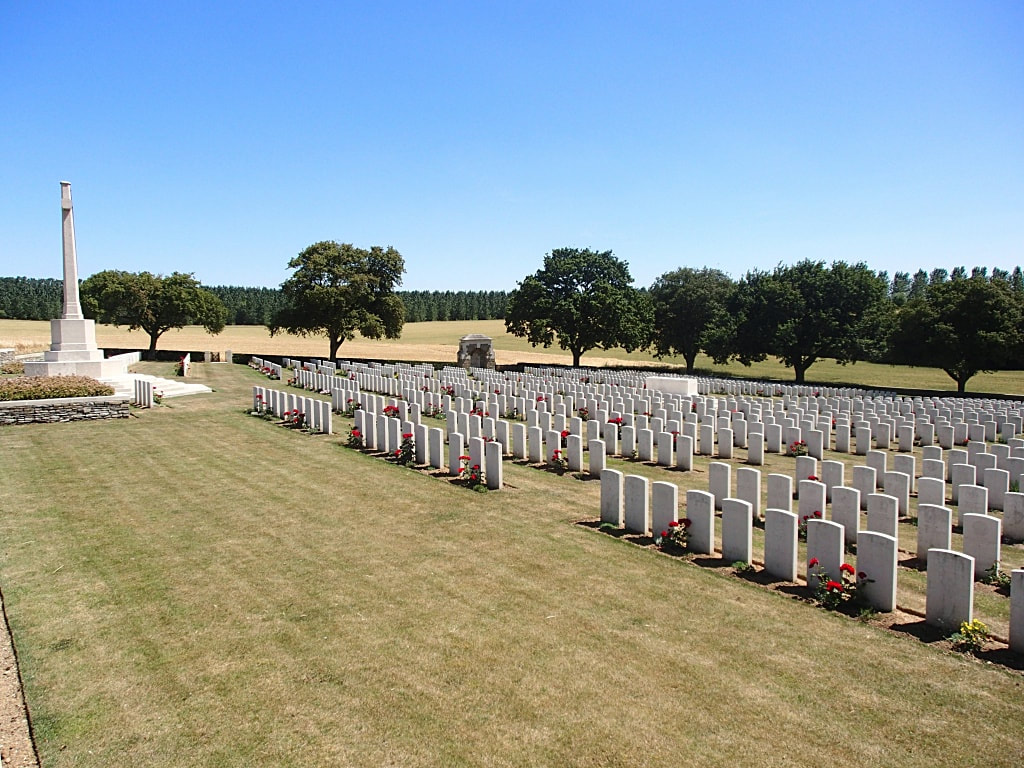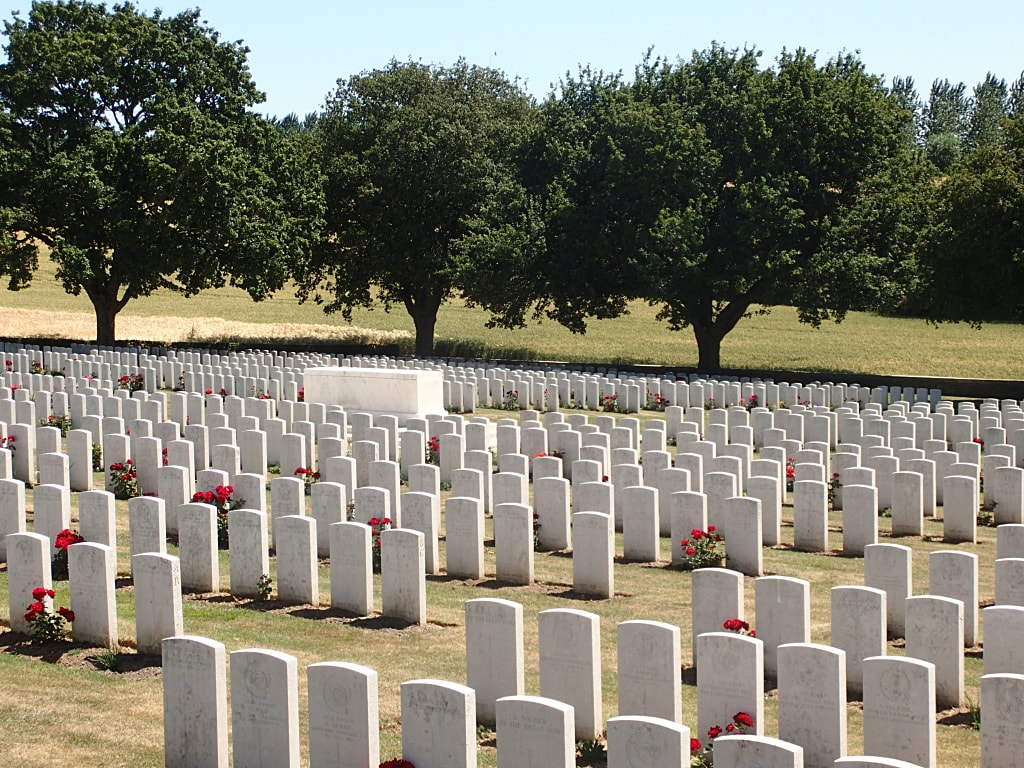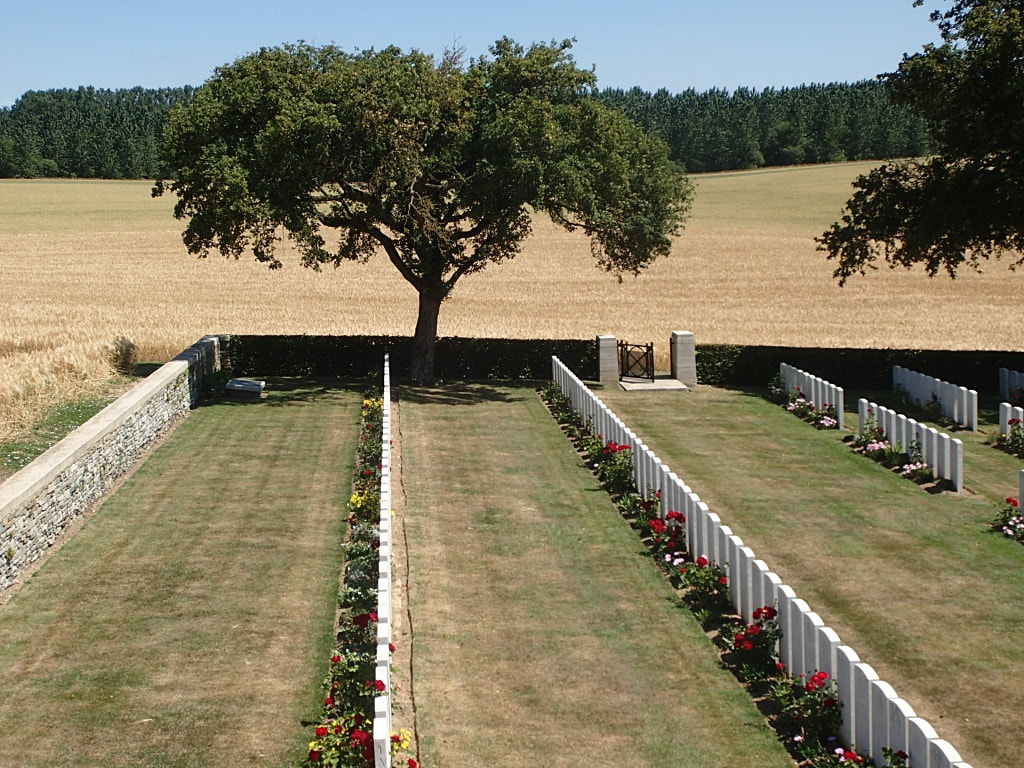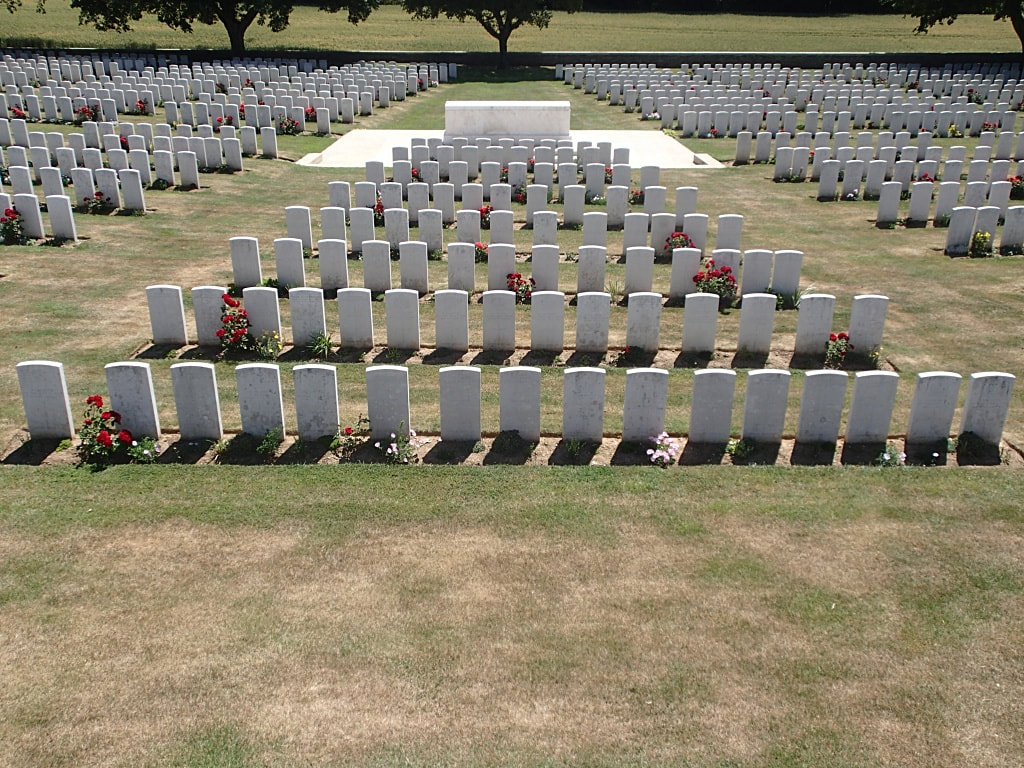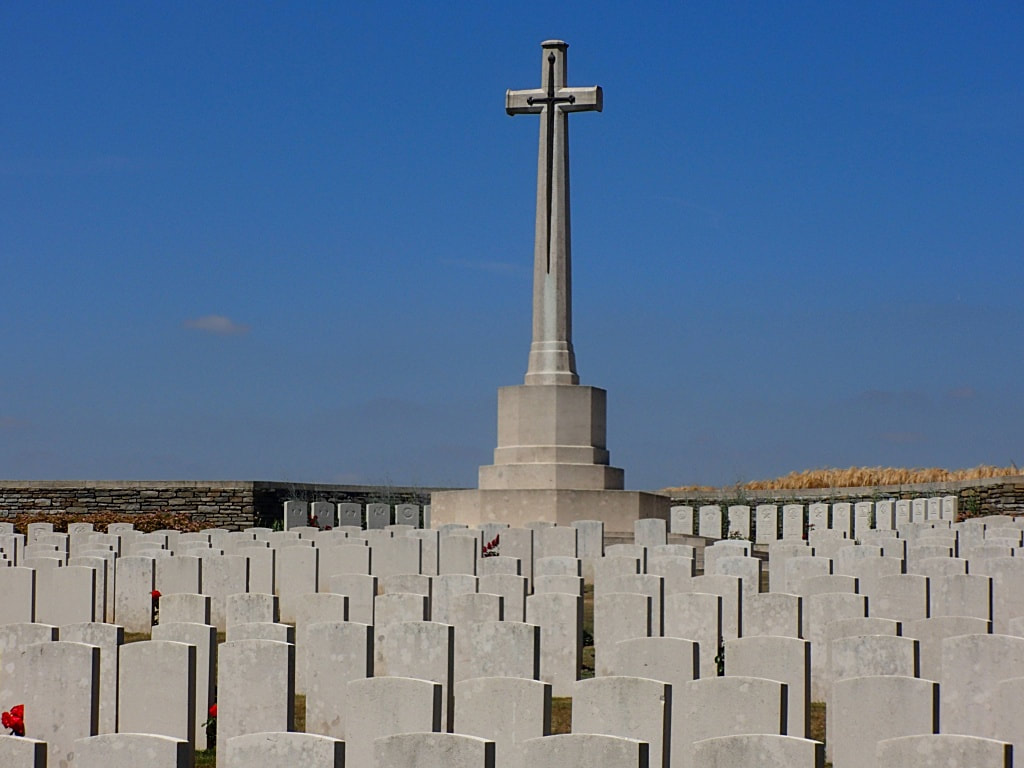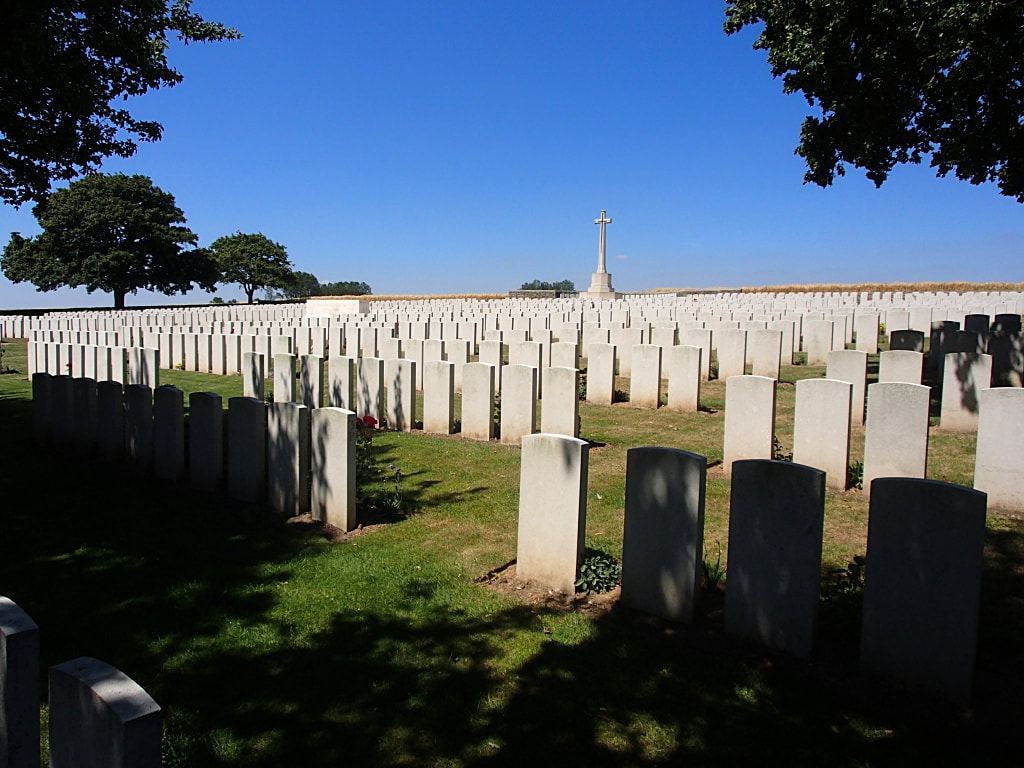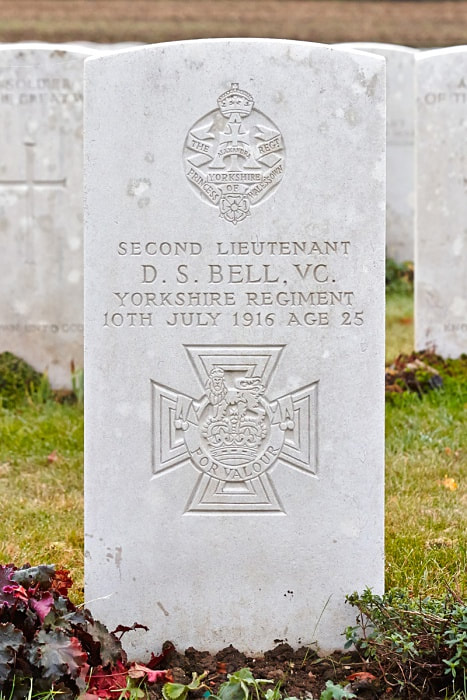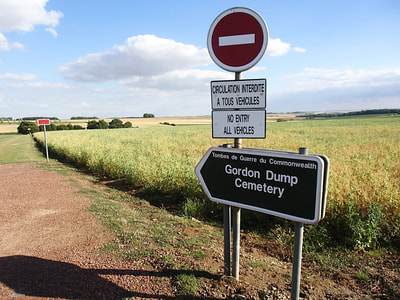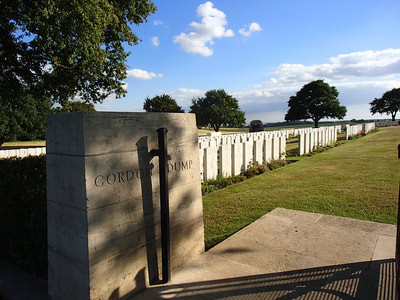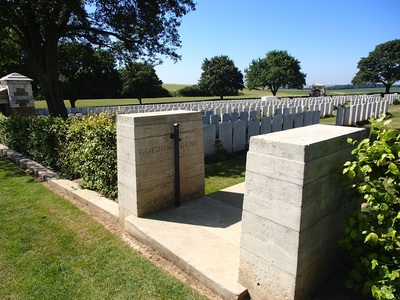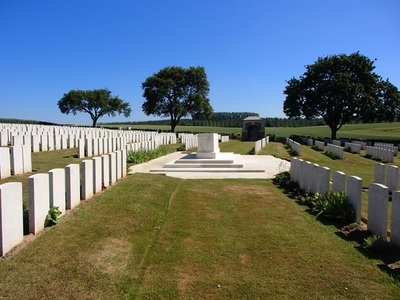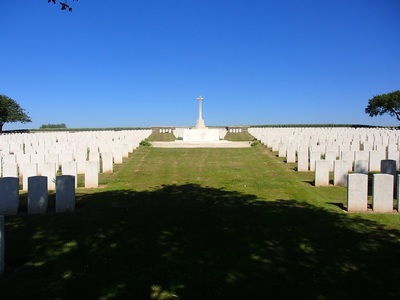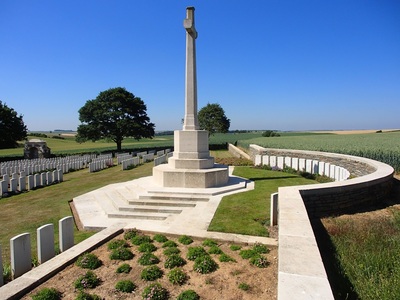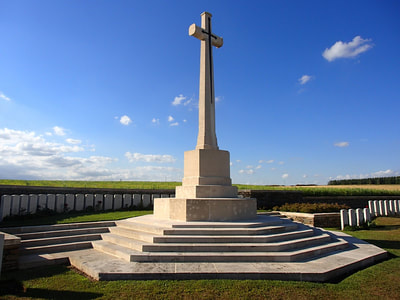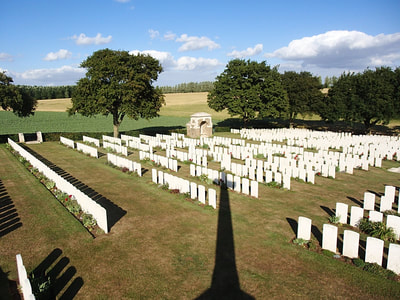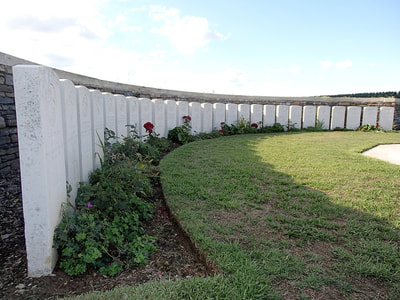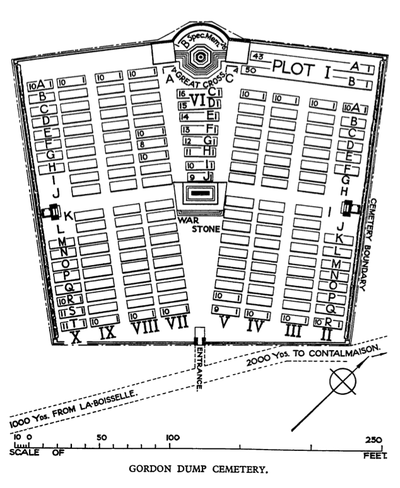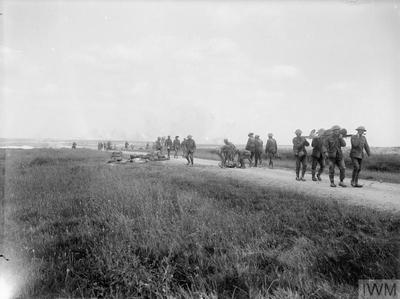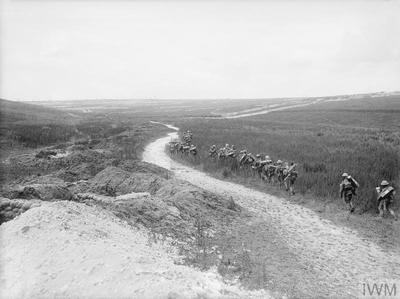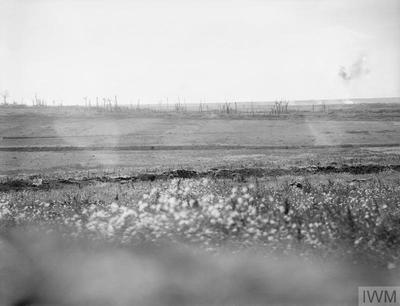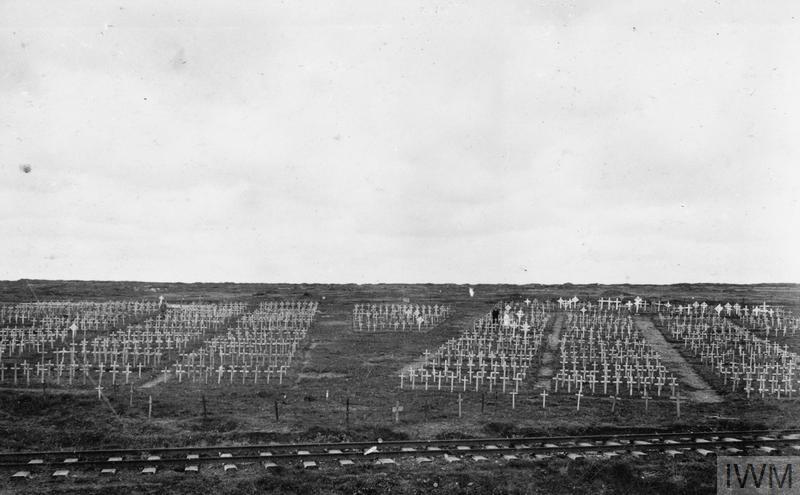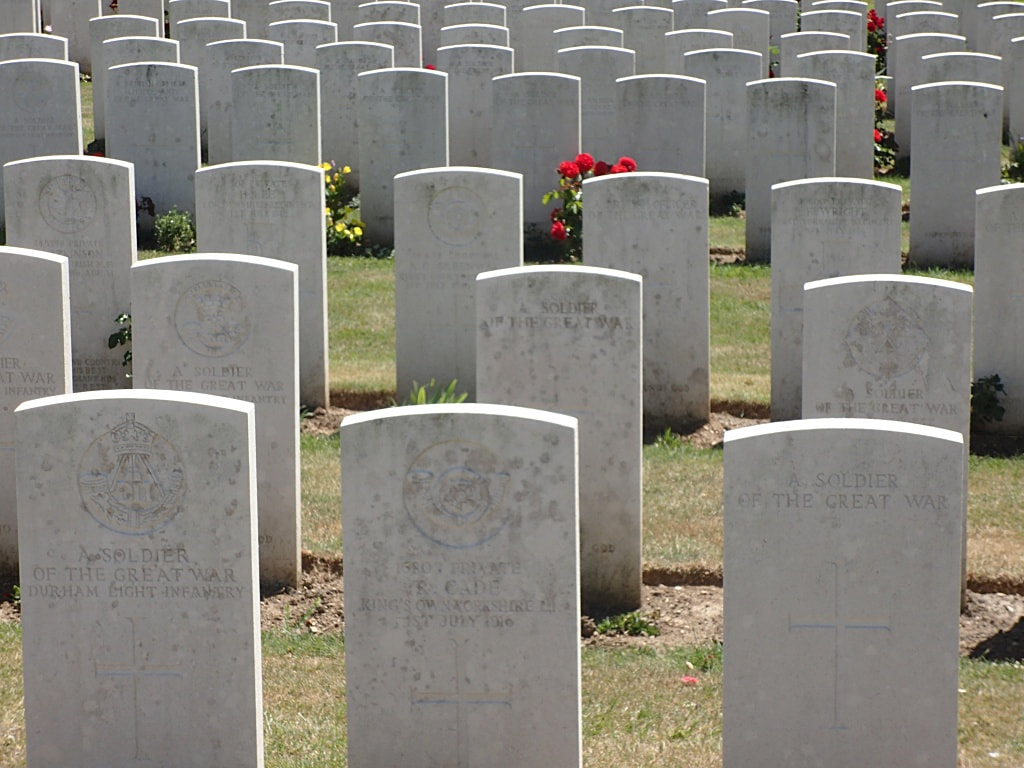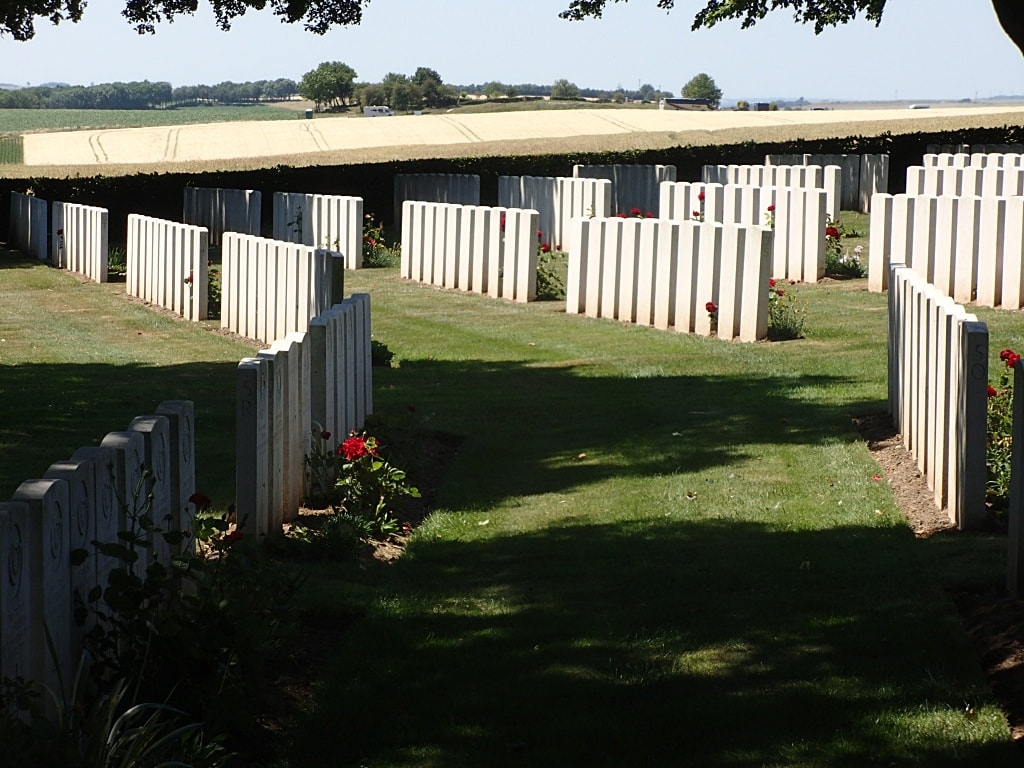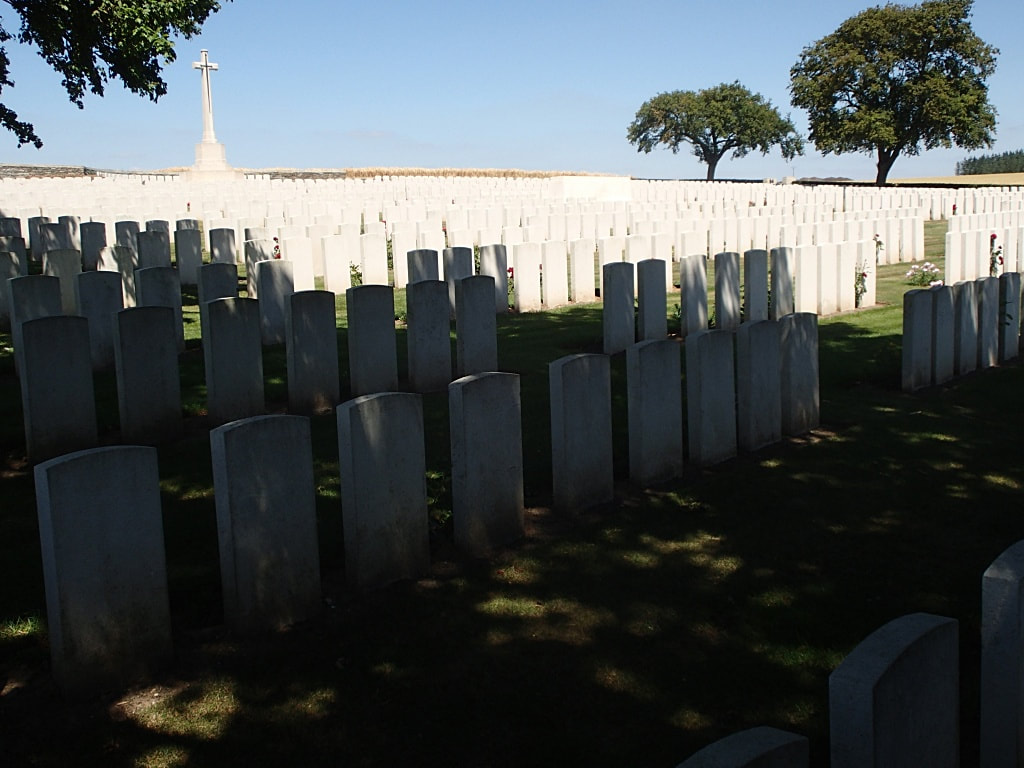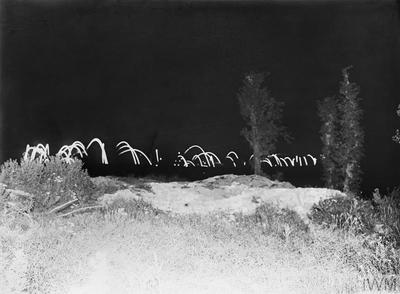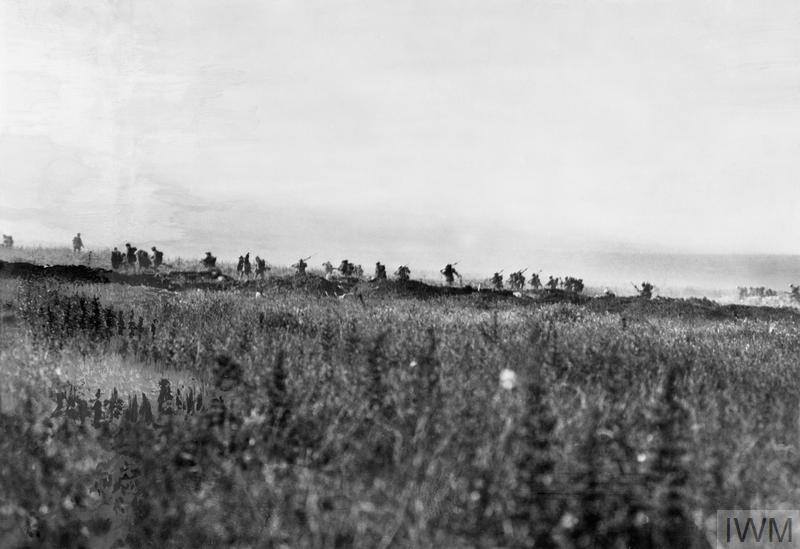GORDON DUMP CEMETERY
Ovillers-La-Boisselle
Somme
France
Roll of Honour
Listed by Surname
Location Information
Gordon Dump Cemetery is 2 kilometres north-east of Albert, on the right hand side of D929 Albert-Bapaume.
At the Y junction (102nd Infantry Brigade Memorial) nearby the Routiers restaurant, turn right onto D20 and follow through Ovillers/La Boisselle. After 2 kilometres the Cemetery is signposted onto a 300 metre grass track.
Historical Information
On 1 July 1916, the first day of the Battle of the Somme, the 8th Division attacked Ovillers and the 34th Division La Boisselle. The villages were not captured, but ground was won between them and to the south of La Boisselle. On 4 July, the 19th (Western) Division cleared La Boisselle and on 7 July the 12th (Eastern) and 25th Divisions gained part of Ovillers, the village being cleared by the 48th (South Midland) Division on 17 July. The two villages were lost during the German advance in March 1918, but they were retaken on the following 24 August by the 38th (Welsh) Division.
Plot I of the Cemetery was made by fighting units after 10 July 1916 and closed in September when it contained the graves of 95 soldiers, mainly Australian. It was called variously Gordon (or Gordon's) Dump Cemetery or Sausage Valley Cemetery, from the name given to the broad, shallow valley that runs down from it to Becourt. The remainder of the cemetery was formed after the Armistice when graves were brought in from the 1916 battlefields immediately surrounding the cemetery.
There are now 1,680 Commonwealth servicemen of the First World War buried or commemorated in this cemetery. 1,056 of the burials are unidentified but there are special memorials to 34 casualties known or believed to be buried among them.
Total Burials: 1,680.
Identified Casualties: United Kingdom 534, Australia 87, Canada 2, India 1. Total 624.
The cemetery was designed by Sir Herbert Baker
Dedications
22151 Private Thomas Marsh, 10th Bn. Lancashire Fusiliers 6th July 1916.
Remembered by granddaughter Lorraine Ward
Gordon Dump Cemetery is 2 kilometres north-east of Albert, on the right hand side of D929 Albert-Bapaume.
At the Y junction (102nd Infantry Brigade Memorial) nearby the Routiers restaurant, turn right onto D20 and follow through Ovillers/La Boisselle. After 2 kilometres the Cemetery is signposted onto a 300 metre grass track.
Historical Information
On 1 July 1916, the first day of the Battle of the Somme, the 8th Division attacked Ovillers and the 34th Division La Boisselle. The villages were not captured, but ground was won between them and to the south of La Boisselle. On 4 July, the 19th (Western) Division cleared La Boisselle and on 7 July the 12th (Eastern) and 25th Divisions gained part of Ovillers, the village being cleared by the 48th (South Midland) Division on 17 July. The two villages were lost during the German advance in March 1918, but they were retaken on the following 24 August by the 38th (Welsh) Division.
Plot I of the Cemetery was made by fighting units after 10 July 1916 and closed in September when it contained the graves of 95 soldiers, mainly Australian. It was called variously Gordon (or Gordon's) Dump Cemetery or Sausage Valley Cemetery, from the name given to the broad, shallow valley that runs down from it to Becourt. The remainder of the cemetery was formed after the Armistice when graves were brought in from the 1916 battlefields immediately surrounding the cemetery.
There are now 1,680 Commonwealth servicemen of the First World War buried or commemorated in this cemetery. 1,056 of the burials are unidentified but there are special memorials to 34 casualties known or believed to be buried among them.
Total Burials: 1,680.
Identified Casualties: United Kingdom 534, Australia 87, Canada 2, India 1. Total 624.
The cemetery was designed by Sir Herbert Baker
Dedications
22151 Private Thomas Marsh, 10th Bn. Lancashire Fusiliers 6th July 1916.
Remembered by granddaughter Lorraine Ward
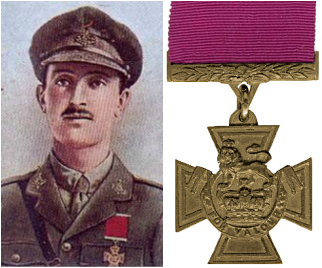
Second Lieutenant Donald Simpson Bell, V. C.
9th Bn. Yorkshire Regiment, killed in action 10th July 1916, aged 25. Plot IV. A. 8.
Former professional football player. Son of Smith and Annie Bell, of Western Flats, Queen's Rd., Harrogate; husband of Rhoda Bell, of Wilmslow, Cheshire.
Citation: An extract from "The London Gazette," No. 29740, dated 8th Sept., 1916, records the following:- "For most conspicuous bravery. During an attack a very heavy enfilade fire was opened on the attacking company by a hostile machine gun. 2nd Lt. Bell immediately, and on his own initiative, crept up a communication trench and then, followed by Corpl. Colwill and Pte. Batey, rushed across the open under very heavy fire and attacked the machine gun, shooting the firer with his revolver, and destroying gun and personnel with bombs. This very brave act saved many lives and ensured the success of the attack. Five days later this very gallant officer lost his life performing a very similar act of bravery.
9th Bn. Yorkshire Regiment, killed in action 10th July 1916, aged 25. Plot IV. A. 8.
Former professional football player. Son of Smith and Annie Bell, of Western Flats, Queen's Rd., Harrogate; husband of Rhoda Bell, of Wilmslow, Cheshire.
Citation: An extract from "The London Gazette," No. 29740, dated 8th Sept., 1916, records the following:- "For most conspicuous bravery. During an attack a very heavy enfilade fire was opened on the attacking company by a hostile machine gun. 2nd Lt. Bell immediately, and on his own initiative, crept up a communication trench and then, followed by Corpl. Colwill and Pte. Batey, rushed across the open under very heavy fire and attacked the machine gun, shooting the firer with his revolver, and destroying gun and personnel with bombs. This very brave act saved many lives and ensured the success of the attack. Five days later this very gallant officer lost his life performing a very similar act of bravery.
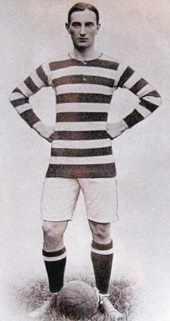
Donald Bell is shown here in the Green and White hoops of Bradford (Park Avenue), his playing record is shown below
1912-13 SEASON - BRADFORD (PARK AVENUE)
April 16th, 1913, WOLVES, Won 5-1, English Division 2.
1913-14 SEASON - BRADFORD (PARK AVENUE)
October 18th, 1913, FULHAM, Won 1-0, English Division 2.
October 25th, 1913, NOTTS. COUNTY, Won 3-2, English Division 2.
November 1st, 1913, LEICESTER FOSSE, Won 3-2, English Division 2.
November 8th, 1913, WOLVES, Lost 0-1, English Division 2.
1912-13 SEASON - BRADFORD (PARK AVENUE)
April 16th, 1913, WOLVES, Won 5-1, English Division 2.
1913-14 SEASON - BRADFORD (PARK AVENUE)
October 18th, 1913, FULHAM, Won 1-0, English Division 2.
October 25th, 1913, NOTTS. COUNTY, Won 3-2, English Division 2.
November 1st, 1913, LEICESTER FOSSE, Won 3-2, English Division 2.
November 8th, 1913, WOLVES, Lost 0-1, English Division 2.
Bell's Redoubt Memorial
The memorial is on the Mametz road from Contalmaison and is close to the spot where Donald Bell was originally buried. The memorial which was unveiled on 9th July 2000 replaces a wooden cross which was erected by his battalion.
|
c. 1919. The isolated graves, each marked with a cross, of 52 Private (Pte) Arthur Joseph Stanley Clarke of Wattle Flat, SA, and 2186 Pte Thomas Joseph Lawrance (Lawrence), of Adelaide, SA, both of the 27th Battalion. Pte Clarke killed in action (KIA) at Pozieres on 29 July 1916 (Roll of Honour shows 30 July 1916). Pte Lawrence an alias for Thomas Joseph Nepean, was KIA on 1 August 1916. Both are buried at the Gordon Dump Military Cemetery, Ovillers La Boisselle, France.
|
cc.1919. The isolated graves of 43 Private (Pte) Thomas William Chalklen and 174 Corporal (Cpl) Robert Vincent Payne, both of the 27th Battalion. Pte Chalklen, a driver from Port Augusta, SA prior to enlistment and Cpl Payne, a telephone mechanic from Richmond, SA prior to enlistment both embarked with A Company from Adelaide on HMAT Geelong on 31 May 1915. On 30 July 1916 Pte Chalklen was killed in action in France aged 20. On the same day, Cpl Payne, aged 22, was also killed in action. Following the Armistice, their remains were exhumed and re-interred in the Gordon Dump Cemetery, Ovillers-La-Boisselle, France.
|

